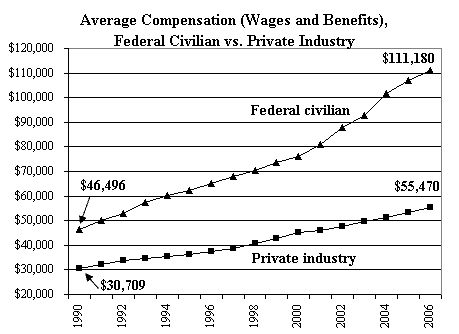A week or so ago, the Toronto Star accused Phoenix of being "unnatural" and hypothesized that water shortages would soon drive people in a reverse migration to the Rust Belt, where lots of underutilized infrastructure exists. I had a long, long response, because there was just so much silly stuff in the article, but you can bet I argued:
- Why is it unnatural for Phoenix to depend on water moved from long distances but it is natural for Buffalo and Cleveland to depend on hydrocarbons for winter heat moved from a long distance away? When did self-sufficiency in water become the be-all end-all judge of city sustainability? And how do cities dependent on big old coal-fired plants criticize the CO2 footprint of a city powered by the largest nuclear plant in the country?
- To the extent Phoenicians are inattentive to water use, it is because we have some of the cheapest water in the country, provided to us at ridiculously low rates to politicians who would rather manage water supply and demand through command and control than through price and markets. Much of Arizona's water use is in agriculture, where water hungry crops are grown in the Sonoran Desert because of subsidized water use rates and federal agricultural subsidies.
I did a bit more research, and found this:
In an average year, Arizonans go through about 7.25 million acre-feet,
or nearly 2.4 trillion gallons. Put a different way, that amount of
water could support a residential population of nearly 30 million
people.
Except it doesn't. It's supporting a population of 5.7 million - and a
lot of farms, which use about 68 percent of the state's water.
I have no problem with whoever wants to use the water. If people want to make a go of cotton farming in the desert, power to them. EXCEPT when the government provides them massive subsidies for doing so, as is the case in Arizona (and most all southwestern) agriculture. Cotton farmers, for example, receive massive government subsidies for growing their crops, and water their plants with subsidized artificially low-priced water. If the distortive government subsidies went away, and water prices were allowed to float up to where supply met demand (and we were not draining down aquifers and Lake Powell) then my guess is that a lot of desert agriculture would disappear.
By the way, I am also perfectly willing to believe that if water prices rose, there would be fewer people moving to the area. Fine. However, this effect would likely be small, since water costs are only a small percentage of the costs of home owning but are a huge percent of the costs of agriculture. But I think we can see that trying to blame Arizona's water problems on inward residential migration is pointing the finger in the wrong direction.
Interestingly, even that great bete noir of environmentalists and outside critics, our golf courses, really have a minimal impact on the water use:
Everyone's favorite culprit, golf courses use two-thirds of the
industrial supply, or about 4 percent to 5 percent of the total supply.
Some courses use treated effluent, or "gray water." Scottsdale, for
example, requires any new course to use gray water or bring its own
supply.
Postscript: Water is one of those weird topics, a bit like health care I guess, where most people seem to assume that the normal laws of economics do not apply. Over the last several months, I have probably read 30 articles on Arizona water use. Not one single time in any article have I seen mention of the word "price." Its all about what command and control methods we need to exercise. Take the guy they interviewed for the article above:
Charles Buerger, who divides his year between homes in Gilbert and
suburban Chicago, is sometimes surprised that people in northern
Illinois, on the banks of Lake Michigan, seem more concerned about
water use than people in dry Arizona.
"They have every-other-day grass watering back there," Buerger said.
"They fine you if you're overwatering or if you're watering on days
you're not supposed to. They're very conscious about water supplies.
The way Arizona's growing, you just wonder, 'Where's all this water
coming from?' "
Pricing matters, even for water! Not silly even-odd day lawn watering laws. Just look at these numbers:
| City |
Monthly cost for water service of 8,500 gallons |
| Memphis, Tennessee |
$14.16 |
| Phoenix, Arizona |
$16.27 |
| Charlotte, North Carolina |
$17.52 |
| Dallas, Texas |
$20.04 |
| Austin, Texas |
$23.15 |
| Portland, Oregon |
$23.44 |
| Louisville, Kentucky |
$23.47 |
| Houston, Texas |
$26.49 |
| Milwaukee, Wisconsin |
$27.86 |
| East Bay MUD, Oakland, California |
$31.13 |
| Atlanta, Georgia |
$33.60 |
| San Diego, California |
$37.52 |
| Seattle, Washington |
$39.75 |
What could explain more eloqently why I paid more attention to how I watered my lawn in rainy Seattle than desert-bound Phoenix. Remember gasoline in the 1970's. It wasn't even-odd day rationing that solved the supply crisis; in the end, it was elimination of price controls.
Update: The Toronto Star argued that Phoenix represented environmental Armageddon while the Great Lakes region was the environmentally smart place to live. They suggested "that in the
Great Lakes basin, where less than half a per cent of the world's
population sits within easy reach of a quarter of the planet's fresh
water, the opportunity for harmony exists." Of course, that's only if you ignore the fact that these cities treat the Great Lakes like one big toilet:
"The Great Lakes basin is one of the most important freshwater
ecosystems on the planet - holding one fifth of the world's
freshwater," said the report's author Dr. Elaine MacDonald. "Yet, the
20 cities we evaluated are dumping the equivalent of more than 100
Olympic swimming pools full of raw sewage directly into the Great Lakes
every single day."

This is the kind of stuff that has a lot higher immediate impact, and should be worked long before, tenuous claims of damage from CO2 production.





